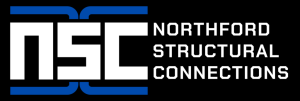

An example of successful Design and Traffic Flow Control in an urban setting.
Article Sponsored by:
Northford Structural Connections (NSC) specializes in innovative engineering solutions for enhancing the safety and durability of precast concrete structures. Their patented products, including the Double-Tee Flexible Connection (DTFC) and Double-Tee Connection Pro (DTC Pro), address critical challenges like fatigue, corrosion, and seismic resilience. With a focus on quality and longevity, NSC provides advanced connection systems trusted by industry professionals for both retrofitting and new construction projects.
The term DTFC, which stands for Design and Traffic Flow Control, is increasingly relevant in the construction and transportation industries. This comprehensive approach integrates design principles with effective traffic management strategies, ensuring safer and more efficient roadways. Various stakeholders— urban planners, civil engineers, and construction managers— frequently seek clarity on DTFC’s applications and implications.
The primary purpose of DTFC is to enhance safety and efficiency in transportation systems. By coordinating design elements with traffic management, DTFC aims to minimize congestion, reduce accidents, and promote smooth traffic flow across various infrastructures.
DTFC is designed to complement existing infrastructure rather than replace it. It employs technology and data analysis to optimize current road layouts and traffic signals. This integration often involves real-time monitoring and adjustments to improve traffic flow and enhance safety.
Urban areas face unique challenges such as increased traffic demand and limited space. DTFC plays a critical role in urban planning by providing guidelines and strategies that lead to more efficient land use. It considers population density, traffic patterns, and environmental impacts to create sustainable urban environments.
Technology is a cornerstone of DTFC. Tools such as traffic modeling software, sensors, and data analytics enable planners to assess current conditions and forecast future traffic scenarios. This technological backbone facilitates informed decision-making and proactive management of transportation systems.
Yes, DTFC can significantly lessen environmental impacts. By promoting efficient traffic flow, it reduces vehicle emissions stemming from idling and stop-and-go conditions. Additionally, DTFC strategies can encourage the use of public transportation, cycling, and walking, further minimizing the carbon footprint of urban areas.
Implementing DTFC is not without challenges. Resistance from communities, budget constraints, and the need for cross-disciplinary collaboration can hinder progress. Effective communication and stakeholder engagement are essential components for overcoming these obstacles and ensuring successful implementation.
Precast connections refer to the use of prefabricated concrete elements within the design and construction processes associated with DTFC. These components are manufactured offsite and transported to the construction location, streamlining assembly and improving construction timelines.
Precast connections facilitate rapid installation of road elements such as bridges, noise barriers, and retaining walls. Their efficient deployment minimizes lane closures and disruptions, which is critical for maintaining smooth traffic flow during construction activities.
Absolutely. The benefits of using precast connections include enhanced structural integrity, improved quality control, and lower labor costs. Additionally, the reduced on-site construction time decreases the impact on surrounding traffic conditions, thus promoting an overall improvement in traffic management.
DTFC is evolving alongside advancements in technology and urban development. Trends such as smart traffic systems, autonomous vehicles, and data-driven urban planning are shaping the future. The integration of artificial intelligence and machine learning in traffic management systems promises to enhance predictive capabilities.
As urban areas grow and technology advances, DTFC will likely become more sophisticated. Future implementations may include more dynamic systems capable of adapting in real time to traffic conditions, further enhancing safety and efficiency.
Community engagement is vital in ensuring that DTFC initiatives address the needs and concerns of local populations. Involving citizens during the planning phase fosters goodwill, promotes transparency, and yields insights that can significantly improve the efficacy of DTFC strategies.
DTFC plays a crucial role in the development of safer, more efficient transportation systems. Understanding common questions around its purpose, integration, and technology can empower stakeholders to implement more effective strategies. As the focus shifts toward sustainability and technological integration, the potential for DTFC to revolutionize urban planning and traffic management remains significant. As new challenges arise, continued innovation in precast connections and community engagement will be essential to navigate the future landscape of transportation infrastructure.

Concrete Strength • Metal Resilience • Connecting Futures
Phone: (203) 777-0751
Email: admin@nscclips.com
News Summary A minor earthquake, measuring 2.3 in magnitude, struck early Thursday near Elgin in…
News Summary In a contentious execution, South Carolina executed Mikal Mahdi by firing squad, raising…
News Summary Keishan Scott, a 24-year-old Democrat, won a decisive victory in South Carolina's House…
News Summary A tragic house explosion in Lexington, Missouri, resulted in the death of Alistair…
News Summary Georgia Injury Lawyers has opened a new office in Augusta, driven by the…
News Summary Boston's Mayor Michelle Wu has publicly condemned ICE's aggressive tactics, arguing that they…